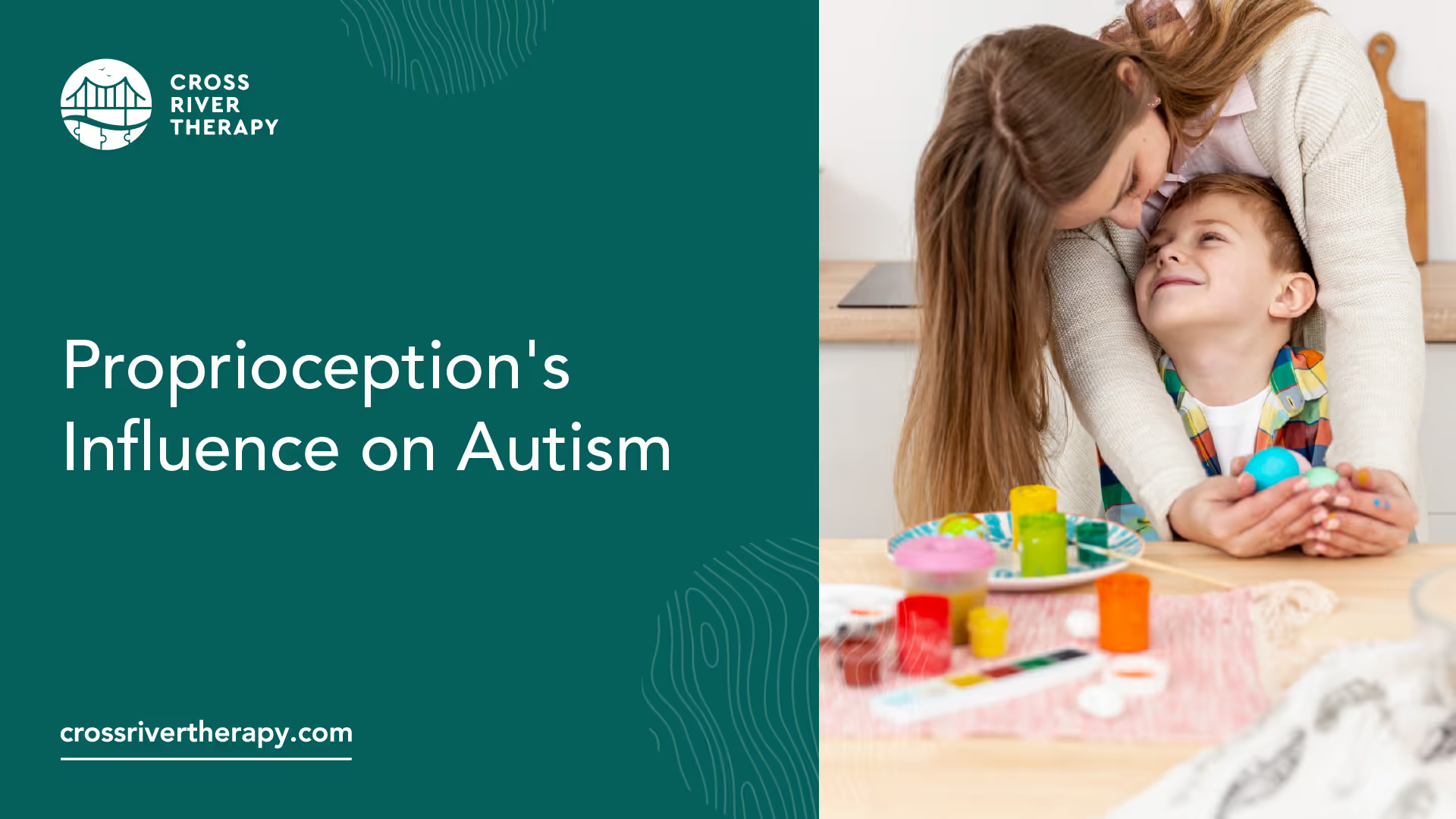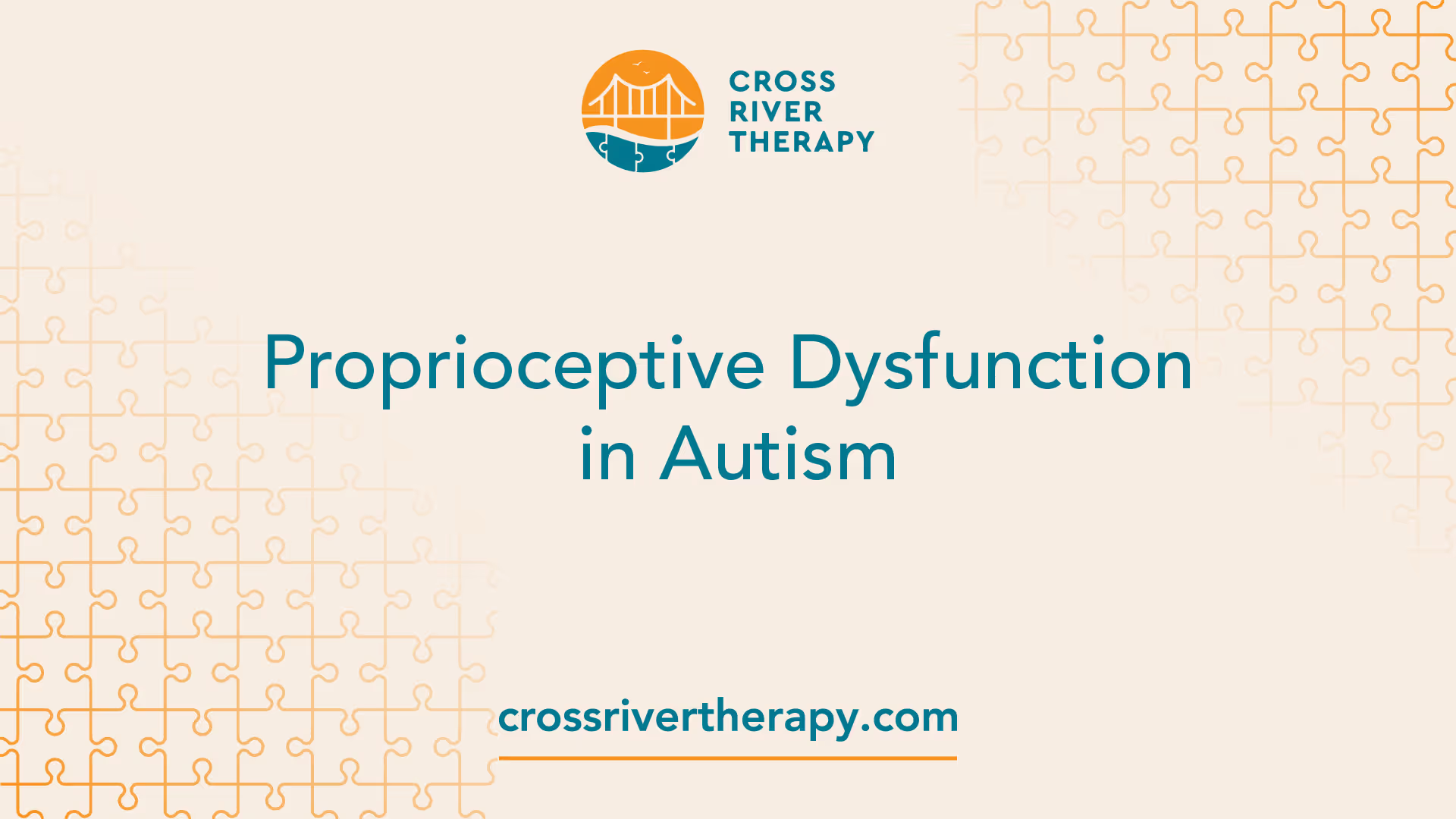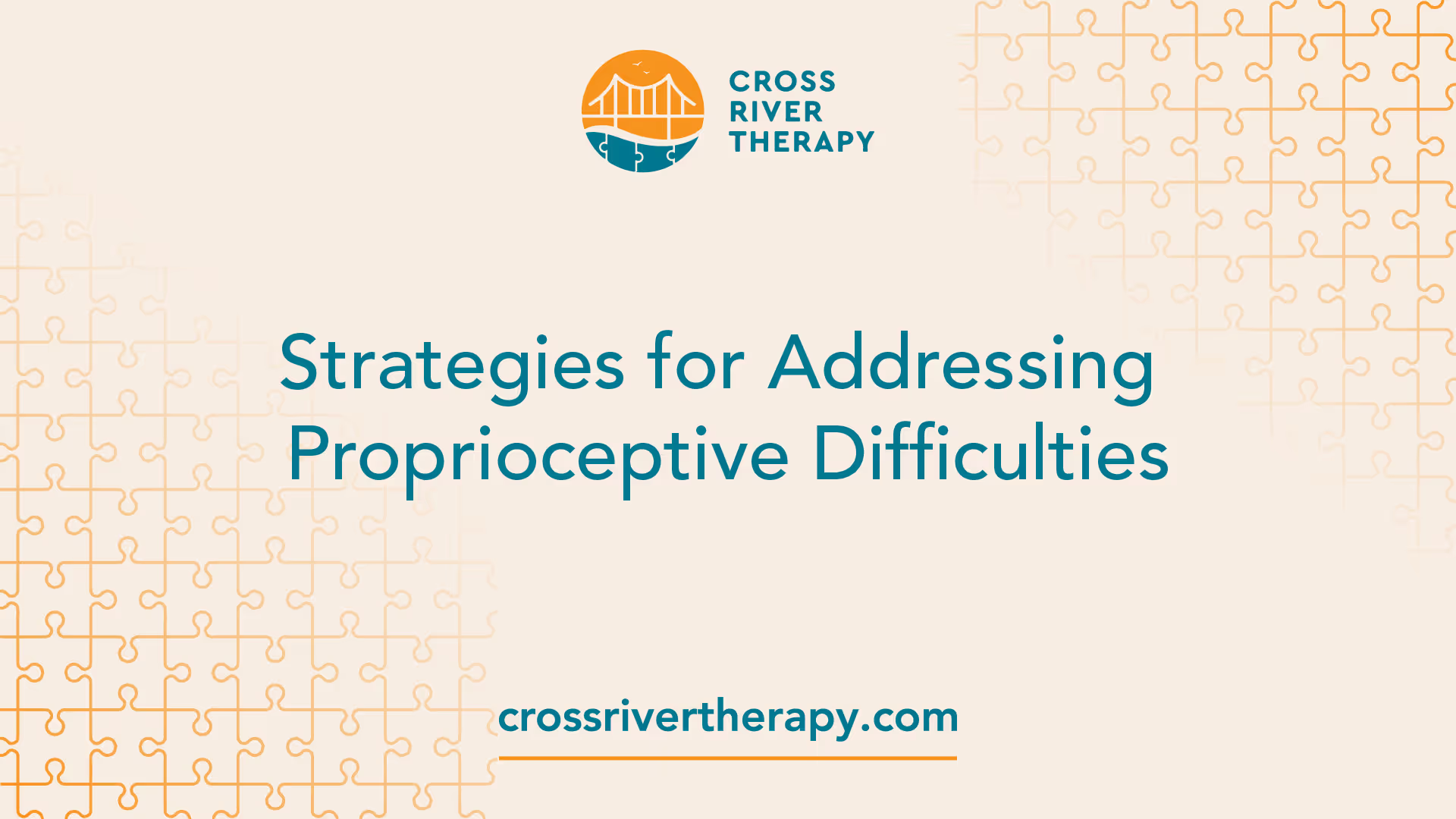Proprioception's Influence on Autism
Explore the impact of proprioception on autism and strategies to improve sensory processing.
Understanding Proprioception
In the context of autism, an essential sense to understand is proprioception. Proprioception, also referred to as kinesthesia, is the body's ability to sense movement, action, and location. This sensory system plays a vital role in body awareness, self-regulation, coordination, posture, and the ability to focus. It is particularly significant in the context of 'proprioception and autism' as individuals with autism often face challenges related to this sense.

The Role of Proprioception
Proprioception is a sense that informs us about our bodies' position relative to other objects and open spaces and how our different body parts are moving. It enables individuals to perform actions like walking without consciously thinking about where to place their foot next or touching their elbow with their eyes closed. This sense regulates movement, posture, and appropriate pressure for tasks like cracking open an egg without crushing it. Some individuals on the autism spectrum may have varying differences related to this sense. For a deeper understanding of how proprioception manifests in individuals with autism, check out our article on proprioception autism examples.
Importance in Child Development
Proprioception plays a fundamental role in child development, particularly in the context of autism. It is crucial for the development of body awareness and is present in newborns without the need for vision.
In addition, proprioception plays a significant role in self-regulation, coordination, posture, body awareness, focus, and speech for individuals on the autism spectrum. It provides vital information to the brain about the body's position in space, movement of body parts, and muscle strength. Proprioceptive input can help regulate emotional and behavioral responses to sensory stimulation in individuals with autism [5].
Understanding the role and importance of proprioception can provide valuable insights for parents and caregivers of individuals with autism. It can help them understand behavioral responses better and equip them with effective strategies to address proprioceptive difficulties. For more on this, refer to our article what is proprioception why is it important?.
Proprioceptive Dysfunction in Autism
Proprioception, the sense that tells us where our bodies are in relation to other objects and in open spaces, and how our different body parts are moving, plays a crucial role in our daily lives. It helps regulate movement, posture, and appropriate pressure for tasks. However, for individuals with autism, proprioceptive dysfunction can present unique challenges and behavioral manifestations.

Challenges Faced
For individuals with autism, a dysfunction in proprioception can lead to a variety of challenges. Those who are oversensitive to proprioception may have difficulty understanding where their body is in relation to other objects. This can lead to clumsiness, knocking things over, dropping items, misjudging personal space, and standing too close to others. They may also struggle with regulating pressure, breaking items, or finding it challenging to write due to excessive pressure on the pen, causing paper ripping. This oversensitivity can even affect their sense of self and identity.
On the other hand, those who are under-responsive to proprioception may seek out more sensory input. They may engage in activities like banging objects, jumping, stomping when walking, bumping into people, or biting/sucking on fingers. They may enjoy deep pressure sensations such as tight bear hugs, wearing tight clothing, or using weighted items like heavy blankets or bags [3].
Manifestations in Behavior
The challenges faced due to proprioceptive dysfunction often manifest in the behaviors of individuals with autism. For example, a child with autism may exhibit behaviors such as excessive staring (autism and staring), or they may engage in heavy physical activities like jumping and stomping to seek more sensory input.
Proprioceptive activities, such as heavy lifting and stretching, can aid in relaxation, organization, and readiness for daily tasks and challenges for children with autism. Engaging in these activities can help improve attention, focus, and sensory processing in these children [6].
For individuals needing extra sensory feedback when walking, weighted backpacks can be beneficial. Occupational therapists can provide advice on a variety of suitable sensory equipment to help regulate proprioceptive input for individuals with autism.
Understanding the concept of proprioception and its influence on autism can provide valuable insights to parents and caregivers, helping them navigate the unique challenges and behaviors associated with this condition. For more in-depth information about proprioception and its relationship with autism, explore our articles on what is proprioception why is it important? and proprioception autism examples.
Strategies for Addressing Proprioceptive Difficulties
Understanding and addressing proprioceptive difficulties can play a crucial role in supporting individuals with autism. With the right strategies and activities, one can help enhance proprioception and, in turn, improve various skills and behaviors in individuals with autism.

Sensory Integration Therapies
Sensory integration therapies often form the core of treatment strategies for addressing proprioceptive disorders. These therapies focus on exercises and activities that improve coordination and balance, in addition to addressing the underlying cause of the disorder. When applied correctly, proprioception training can help reduce the risk of injuries and muscle deterioration.
One of the key goals of sensory integration therapy is to facilitate the brain's ability to process sensory information more effectively. This can help individuals with autism better understand and respond to the input received from their muscles and joints, enhancing their sense of body awareness and movement.
Proprioceptive Activities for Children
Engaging children with autism in proprioceptive activities can be one of the most effective ways to address proprioceptive difficulties. These activities often involve heavy muscle work or deep pressure activities, such as pushing, pulling, carrying heavy objects, weight-bearing, or giving tight hugs. These activities help children stay calm, focused, and ready to participate, supporting optimal learning and attention [7].
Some simple yet effective proprioceptive activities for children include:
These activities, as suggested by Brain Balance Centers, can significantly help children struggling with proprioceptive dysfunction by providing heavy work or tasks involving resistance and input to muscles and joints.
Remember, it's essential to tailor these activities based on the individual child's needs, preferences, and abilities. Always ensure the activities are performed under the supervision of a trained professional or a caregiver to ensure safety.
While addressing proprioceptive difficulties can be challenging, using a combination of sensory integration therapies and proprioceptive activities can make a significant difference. For more insights on proprioception and autism, visit our articles on what is proprioception why is it important? and proprioception autism examples.
Impact of Proprioception in Autism
Understanding how proprioception influences autism can highlight its role in improving the quality of life for individuals on the spectrum. Proprioception, the body's ability to sense its position and movement, plays a pivotal role in enhancing emotional regulation and improving sensory processing.
Enhancing Emotional Regulation
Proprioceptive input serves as a natural calming mechanism for children with autism. It helps regulate an active nervous system, enabling these individuals to cope with feelings of being overwhelmed or overstimulated by their environment.
Engaging in activities that provide proprioceptive input can bring a sense of order and calm to children with autism. This can be particularly beneficial in managing behavioral signs of proprioceptive dysfunction, such as constantly seeking deep pressure or intense physical activities [2].
Improving Sensory Processing
Proprioception is vital for individuals with autism as it provides them with information about their body's position and movement. This sensory input can help these individuals navigate their surroundings effectively, develop body awareness, and establish a sense of boundaries [2].
Additionally, proprioception plays a significant role in self-regulation, coordination, posture, focus, and speech for individuals on the autism spectrum. It provides vital information to the brain about the body's position in space, movement of body parts, and muscle strength. This can help regulate emotional and behavioral responses to sensory stimulation in individuals with autism.
Understanding the impact of proprioception in autism can provide valuable insights into helping individuals with autism navigate their world. For more information on the topic, refer to articles on what is proprioception and why is it important? and proprioception autism examples.
Occupational Therapy for Proprioception
Occupational therapy plays a crucial role in managing proprioceptive difficulties, particularly in individuals with autism. This section will explore the role of occupational therapists and the strategies they employ for evaluation and intervention.
Role of Occupational Therapists
Occupational therapists play a significant role in providing therapeutic interventions and strategies to support individuals with autism in managing their proprioceptive difficulties. By implementing appropriate sensory integration techniques, individuals with autism can improve their attention, awareness, and overall regulation of sensory experiences.
They utilize a variety of techniques and activities to enhance proprioception, including the use of proprioceptive equipment and tools like therapy balls, weighted vests, or balance boards. These tools are designed to provide sensory input to the muscles and joints, helping individuals better understand and control their body movements.
Evaluation and Intervention Strategies
Assessments such as the Comprehensive Observations of Proprioception (COP) scale can be used to evaluate proprioceptive difficulties in children with autism, providing valuable insights for intervention strategies [5].
In terms of intervention, engaging in specific proprioceptive activities can greatly benefit children with autism by providing sensory input that helps them regulate their bodies and emotions. Calming strategies for oversensitive individuals may include deep pressure activities like firm hugs or using weighted items. Stimulating activities for under-responsive individuals may involve engaging in activities that provide intense proprioceptive input [5].
Weighted backpacks can be trialed for individuals needing extra sensory feedback when walking, and occupational therapists can provide advice on a variety of suitable sensory equipment to help regulate proprioceptive input for individuals with autism.
Activities like heavy lifting, stretching, and other proprioceptive input exercises can aid in relaxation, organization, and readiness for daily tasks and challenges. These activities can also help improve attention, focus, and sensory processing in these children.
Through carefully tailored strategies and activities, occupational therapists can help individuals with autism to improve their proprioceptive functioning, leading to enhanced sensory regulation and overall wellbeing. For more examples of proprioceptive activities for children with autism, visit proprioception autism examples.
Proprioceptive Equipment and Tools
The use of appropriate equipment and tools can greatly enhance the effectiveness of proprioceptive interventions in individuals with Autism. These devices are designed to provide specific sensory inputs that help improve body awareness and sensory regulation. This section will explore two such tools: weighted blankets and vests, and therapy balls and balance boards.
Weighted Blankets and Vests
Weighted blankets have gained popularity for their ability to provide proprioceptive input, benefiting individuals with autism. The pressure from the weighted blanket serves as a proprioceptive input, helping to calm and soothe the sensory system. Such deep pressure can promote relaxation and better sleep, leading to improved overall functioning in individuals with autism.
Similarly, weighted vests provide a similar sensory stimulus. The weight in these vests applies a gentle pressure to the wearer's body, simulating the calming effect of a hug or a swaddle. This can be particularly beneficial for those with Autism who experience sensory overloads, helping them feel more grounded and secure.
Therapy Balls and Balance Boards
Therapy balls and balance boards are other effective tools to enhance proprioception in individuals with autism. Both these tools are designed to provide sensory input to the muscles and joints, helping individuals better understand and control their body movements.
Therapy balls, also known as exercise balls, can be used in a variety of ways to enhance balance, coordination, and body awareness. Similarly, balance boards challenge the individual's sense of equilibrium, thereby improving their proprioceptive awareness and control.
Occupational therapists often incorporate these tools into their therapy sessions, using them in a variety of exercises and activities that are fun, engaging, and beneficial for the individual's proprioceptive development [5].
These tools, along with targeted therapies and interventions, can significantly improve the proprioceptive abilities of individuals with autism. For more information on how proprioception affects Autism, visit our articles on proprioception autism examples and what is proprioception and why is it important?.
References
[2]:
[3]:
[4]:
[5]:
[6]:
[7]:



